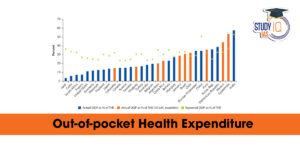Table of Contents
Context: The first monthly bulletin of the Periodic Labour Force Survey (PLFS) was released by the Union Ministry of Statistics & Programme Implementation (MoSPI).
Periodic Labour Force Survey (PLFS)
The Periodic Labour Force Survey (PLFS) is a large-scale survey carried out by the National Statistical Office (NSO) of the Ministry of Statistics and Programme Implementation (MoSPI) of India. It was initiated in April 2017, and its main function is to estimate major employment and unemployment indicators in rural and urban areas in the country.
Key Features and Objectives of PLFS
- High Frequency Data: PLFS tries to produce estimates for important labour force indicators at frequent intervals. It initially reported every quarter for urban areas using the Current Weekly Status (CWS) method.
- Detail Coverage: It makes annual estimates for both rural and urban areas, employing both the Usual Status (PS+SS) and Current Weekly Status (CWS) methods.
- Usual Status (PS+SS): This takes into account the activity status of an individual over a longer reference period of the past 365 days.
- Current Weekly Status (CWS): This measures the activity status according to a shorter reference period of the past seven days up to the survey date.
Key Employment and Unemployment Indicators
- Labour Force Participation Rate (LFPR): Refers to the proportion of people in the population who are either employed, actively seeking work, or available for work.
- Worker Population Ratio (WPR): Indicates the percentage of people who are employed out of the total population.
- Unemployment Rate (UR): Represents the share of unemployed individuals among the total labour force (i.e., those working or seeking work).
- Current Weekly Status (CWS): Denotes a person’s employment status based on their activity during the 7 days before the date of the survey.
Also Check: Unemployment Rate in India
Key Findings of PLFS Monthly Bulletin (April 2025)
According to the first monthly report published recently (April 2025 Monthly Bulletin) on the redesigned PLFS:
- The unemployment rate for individuals aged 15 years and over in India was 5.1% in April 2025 (5.2% among males and 5.0% among females).
- Urban rate of unemployment was 6.5%, and rural unemployment was 4.5%.
- The Labour Force Participation Rate (LFPR) for the same age group was 55.6% (urban: 50.7%, rural: 58.0%). Women
- LFPR was lower at 34.2% compared to men at 77.7%.
- The Worker Population Ratio (WPR) was 52.8% (urban: 47.4%, rural: 55.4%).
1. Labour Force Participation Rate (in per cent) in CWS for persons of age 15 years and above during April 2025
| sector | age group | male | female | person |
| rural | 15-29 years | 63.5 | 23.8 | 43.4 |
| 15 years and above | 79.0 | 38.2 | 58.0 | |
| all ages | 57.5 | 28.8 | 42.9 | |
| urban | 15-29 years | 59.1 | 21.5 | 41.2 |
| 15 years and above | 75.3 | 25.7 | 50.7 | |
| all ages | 58.5 | 20.5 | 39.9 | |
| rural + urban | 15-29 years | 62.0 | 23.1 | 42.7 |
| 15 years and above | 77.7 | 34.2 | 55.6 | |
| all ages | 57.8 | 26.2 | 42.0 |
2. Worker Population Ratio (in per cent) in CWS for persons of age 15 years and above during April 2025
| sector | age group | male | female | person |
| rural | 15-29 years | 55.3 | 21.2 | 38.0 |
| 15 years and above | 75.1 | 36.8 | 55.4 | |
| all ages | 54.7 | 27.7 | 41.0 | |
| urban | 15-29 years | 50.2 | 16.4 | 34.1 |
| 15 years and above | 71.0 | 23.5 | 47.4 | |
| all ages | 55.1 | 18.7 | 37.3 | |
| rural + urban | 15-29 years | 53.6 | 19.8 | 36.8 |
| 15 years and above | 73.7 | 32.5 | 52.8 | |
| all ages | 54.8 | 24.9 | 39.8 |
3. Unemployment Rate (in per cent) in CWS for persons of age 15 years and above during April 2025
| sector | age group | male | female | person |
| rural | 15-29 years | 13.0 | 10.7 | 12.3 |
| 15 years and above | 4.9 | 3.9 | 4.5 | |
| all ages | 4.9 | 3.8 | 4.5 | |
| urban | 15-29 years | 15.0 | 23.7 | 17.2 |
| 15 years and above | 5.8 | 8.7 | 6.5 | |
| all ages | 5.8 | 8.7 | 6.5 | |
| rural + urban | 15-29 years | 13.6 | 14.4 | 13.8 |
| 15 years and above | 5.2 | 5.0 | 5.1 | |
| all ages | 5.2 | 5.0 | 5.1 |
Changes in Periodic Labour Force Survey (PLFS) from 2025
The Periodic Labour Force Survey (PLFS) changed considerably from the beginning of January 2025 to produce higher frequency labour market indicators with better coverage. Following is a list of the most important changes:
Monthly Estimates Introduced
- For the first time, estimates for key labour indicators – Labour Force Participation Rate (LFPR), Worker Population Ratio (WPR), and Unemployment Rate (UR) – are now being published as monthly estimates at the all-India level.
- The monthly estimates have been computed using the Current Weekly Status (CWS), both for rural and urban areas. The first monthly bulletin for April 2025 was published in May 2025.
Quarterly Estimates Extended to Rural Areas
- Earlier, quarterly estimates of employment and unemployment measures based on CWS were only available for urban regions.
- Since 2025, these quarterly estimates will now be available for rural and urban regions alike, which will present the entire picture at the national level. The first quarterly bulletin for April-June 2025 is likely to be released in August 2025.
Annual Results Aligned to Calendar Year
- The yearly PLFS results will henceforth be presented in a calendar year format (January to December) rather than the earlier July to June format.
- This shift is intended to align India’s labour statistics with global databases for improved comparability.
Enhanced Sample Size and Coverage
- The size of the annual sample of First Stage Units (FSUs) has been substantially raised to 22,692 (12,504 rural and 10,188 urban) from the earlier 12,800.
- The number of households surveyed per FSU has been raised from 8 to 12, which translates into a total annual sample of around 2.72 lakh households – a 2.65 times rise. This should enhance the accuracy and dependability of the estimates.
Monthly Rotational Panel Scheme
- The rotational panel sampling design has been utilized. The four visits to each selected household are spread across four consecutive months (one first visit and three revisits).
- The design accommodates the generation of high-frequency estimates with less burden for the sample frame and a 75% overlap of FSUs between successive months for greater comparability.
Improved District-Level Representation
- The district has emerged as the major geographical unit (basic stratum) for sampling in the majority of instances, enhancing regional resolution and guaranteeing most data from most districts.
- Rural samples are further stratified according to the distance from the district headquarters or cities with a population greater than 5 lakhs. Urban samples are stratified on million-plus cities.
Additional Information Collected
The revised PLFS is now collecting more information, including:
- Income from rent of building/land, saving/investment interest, pension, and remittances.
- Details of land owned and land rented out by the household.
- Kind of certifying body for vocational/technical training acquired.
- Additional detailed information about education, including the number of years of education undertaken and the months enrolled in the previous academic year.
Implications of the Changes in Periodic Labour Force Survey (PLFS)
These shifts are anticipated to offer more timely, more frequent, and more granular information on India’s labour market, and this will be extremely useful for:
- More timely and effective policy interventions.
- Improved surveillance over labour market trends and dynamics.
- Better insight into regional and demographic differences in employment and unemployment.
- Improved comparability of Indian labour statistics with global standards.


 Out-of-Pocket Health Expenditure, Reason...
Out-of-Pocket Health Expenditure, Reason...
 Treasury Bills (T-bills): RBI Cuts Holdi...
Treasury Bills (T-bills): RBI Cuts Holdi...
 Fisheries Sector in India, Current Statu...
Fisheries Sector in India, Current Statu...

























